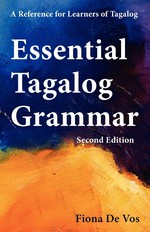Tagalog Na/-ng
Na/-ng is used to link certain words together. For instance, it is used to link adjectives with what they are describing.
|
na/-ng |
rule: use after words ending in— |
example |
|
|---|---|---|---|
|
na |
a consonant other than /n/ |
mabait na babae |
nice woman |
|
-ng |
a vowel or /n/* |
magandang babae mayamang babae |
pretty woman rich woman |
|
na/-ng |
na |
|
rule: use after words ending in— |
a consonant other than /n/ |
|
example |
mabait na babae |
|
nice woman |
|
na/-ng |
-ng |
|
rule: use after words ending in— |
a vowel or /n/* |
|
example |
magandang babae mayamang babae |
|
pretty woman rich woman |
* /ng/ replaces /n/.
Na/-ng can also be understood as that, which or who. Examples:
|
asong tumalon |
dog that jumped |
|
batang kumanta |
child that sang |
|
ballpeng nahulog ballpen na nahulog* |
pen that fell |
* When used to mean that, which or who, na may also be used after words ending in a vowel or /n/.
Other uses of na/-ng are covered in later chapters.
Please respect copyright. Learn more
Contents | Detailed Contents | Up ▲
See notes on Terminology and Pronunciation Marks
